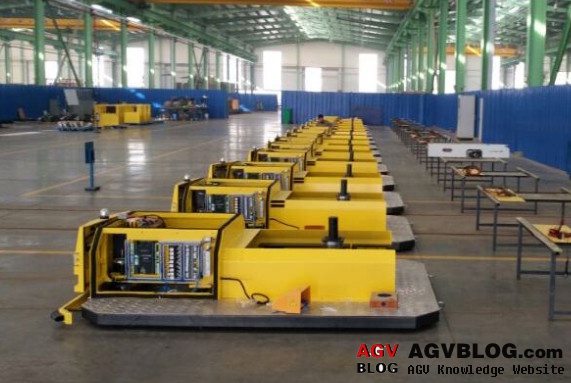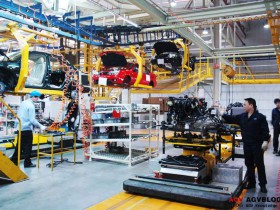The AGV control system is divided into a ground (superior) control system, a vehicle-mounted (stand-alone) control system, and a navigation / guidance system. Among them, the ground control system refers to the fixed equipment of the AGV system, which is mainly responsible for task allocation, vehicle scheduling, and route (line) management. , Traffic management, automatic charging and other functions; the vehicle control system is responsible for AGV's navigation calculation, guidance implementation, vehicle walking, loading and unloading operations and other functions after receiving the command from the higher-level system; the navigation / guidance system provides absolute system for AGV stand-alone Or relative position and heading.

Introduction of AGV ground control system
1. Ground control system
The AGV ground control system (Stationary System), which is the AGV upper control system, is the core of the AGV system. Its main functions are task assignment, vehicle management, traffic management, communication management, etc. for multiple AGVs in the AGV system (AGVS).
2. Task management
Task management is similar to the process management of a computer operating system. It provides an interpretive execution environment for AGV ground control programs; provides scheduled operations based on task priority and start time; and provides various operations on tasks such as start, stop, and cancel.
3. Vehicle management
Vehicle management is the core module of AGV management. It allocates and dispatches AGV to execute tasks according to the request of material handling tasks, calculates the shortest walking path of AGV according to the principle of the shortest walking time of AGV, and controls and directs the walking process of AGV. Charging command.
4. Traffic management
According to the AGV's physical size, operation status and path status, provide AGV automatic mutual avoidance measures, and at the same time avoid the deadlock method of vehicles waiting for each other and the method of releasing the deadlock; AGV traffic management mainly includes walking segment allocation and deadlock Report function.
5. Communication management
Communication management provides the communication function between the AGV ground control system and the AGV stand-alone, ground monitoring system, ground IO equipment, vehicle simulation system and host computer. The communication with AGV uses radio communication method, and a wireless network needs to be established. The AGV only communicates with the ground system in two directions. The AGV does not communicate with each other. The ground control system uses polling to communicate with multiple AGVs. It communicates with the ground monitoring system and vehicles. The communication between the simulation system and the host computer uses TCP / IP communication.
6. Vehicle drive
The car driver is responsible for collecting the AGV status, and sends a permission request for the walking section to the traffic management, and at the same time sends the confirmation section to the AGV.




